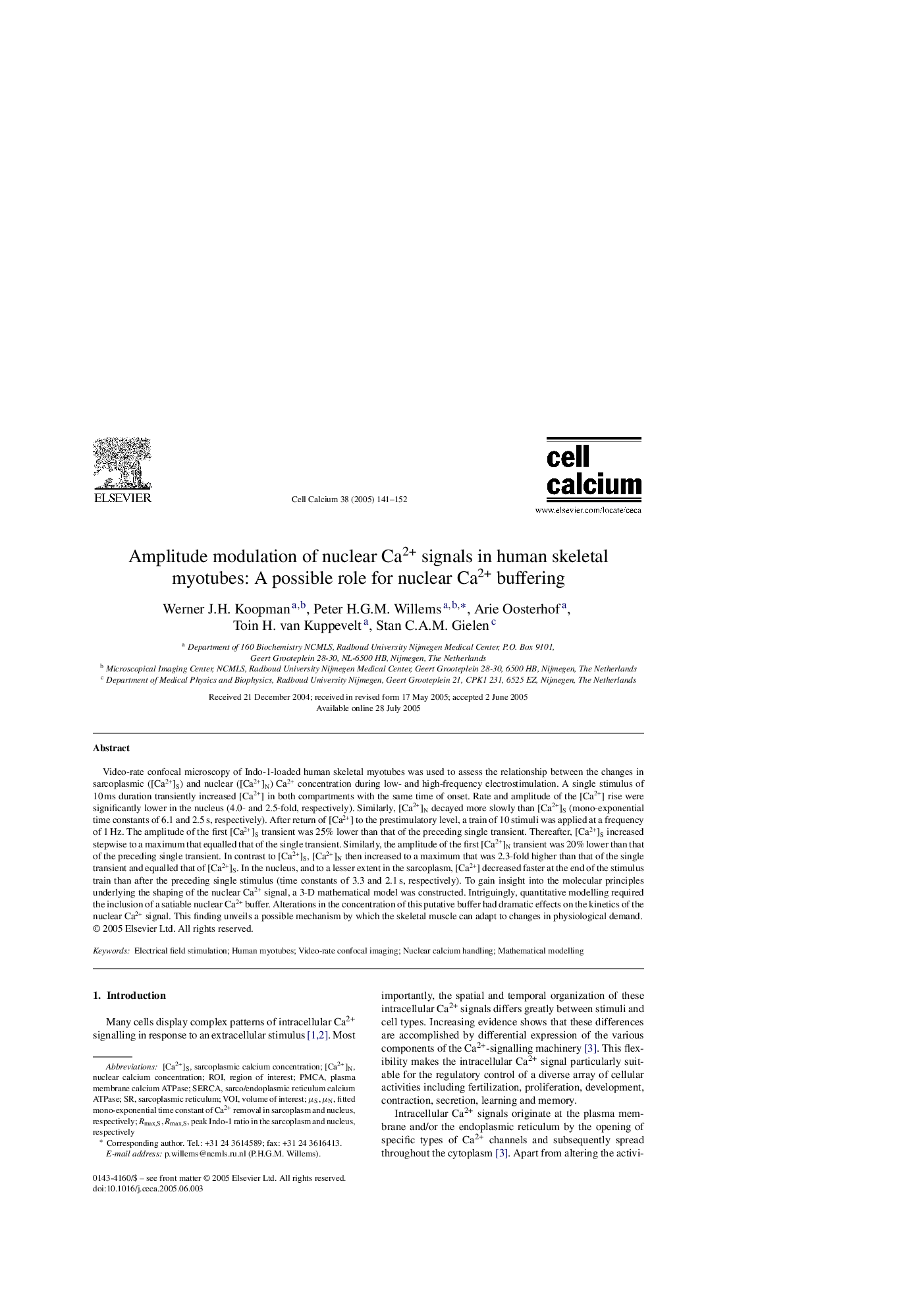| Article ID | Journal | Published Year | Pages | File Type |
|---|---|---|---|---|
| 10926561 | Cell Calcium | 2005 | 12 Pages |
Abstract
Video-rate confocal microscopy of Indo-1-loaded human skeletal myotubes was used to assess the relationship between the changes in sarcoplasmic ([Ca2+]S) and nuclear ([Ca2+]N) Ca2+ concentration during low- and high-frequency electrostimulation. A single stimulus of 10Â ms duration transiently increased [Ca2+] in both compartments with the same time of onset. Rate and amplitude of the [Ca2+] rise were significantly lower in the nucleus (4.0- and 2.5-fold, respectively). Similarly, [Ca2+]N decayed more slowly than [Ca2+]S (mono-exponential time constants of 6.1 and 2.5Â s, respectively). After return of [Ca2+] to the prestimulatory level, a train of 10 stimuli was applied at a frequency of 1Â Hz. The amplitude of the first [Ca2+]S transient was 25% lower than that of the preceding single transient. Thereafter, [Ca2+]S increased stepwise to a maximum that equalled that of the single transient. Similarly, the amplitude of the first [Ca2+]N transient was 20% lower than that of the preceding single transient. In contrast to [Ca2+]S, [Ca2+]N then increased to a maximum that was 2.3-fold higher than that of the single transient and equalled that of [Ca2+]S. In the nucleus, and to a lesser extent in the sarcoplasm, [Ca2+] decreased faster at the end of the stimulus train than after the preceding single stimulus (time constants of 3.3 and 2.1Â s, respectively). To gain insight into the molecular principles underlying the shaping of the nuclear Ca2+ signal, a 3-D mathematical model was constructed. Intriguingly, quantitative modelling required the inclusion of a satiable nuclear Ca2+ buffer. Alterations in the concentration of this putative buffer had dramatic effects on the kinetics of the nuclear Ca2+ signal. This finding unveils a possible mechanism by which the skeletal muscle can adapt to changes in physiological demand.
Keywords
Related Topics
Life Sciences
Biochemistry, Genetics and Molecular Biology
Cell Biology
Authors
Werner J.H. Koopman, Peter H.G.M. Willems, Arie Oosterhof, Toin H. van Kuppevelt, Stan C.A.M. Gielen,
